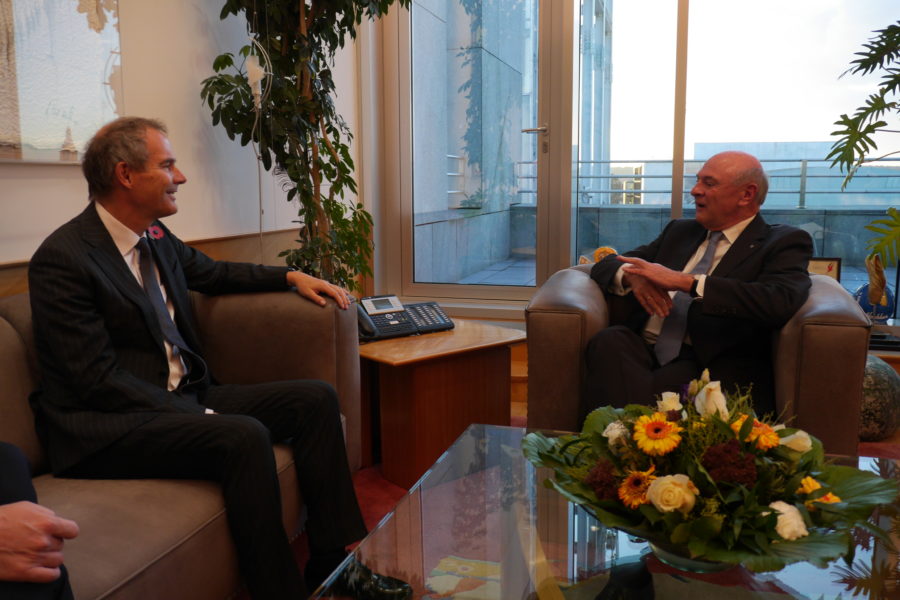Vienna is not Austria – any more than London is the United Kingdom.
So I was delighted recently to visit Lower Austria (Niederösterreich) to find out what makes Austria’s largest and second most populous province tick; and to explore and promote connections to the UK.
We started our visit in Amstetten, where I sampled tasty Austrian mountain cheese (Bergkäse) at the market before heading to our first call at the Umdasch Group. This is a global Austrian success story which includes the Umdasch Shopfitting Group and the Doka construction company, both of which have made important investments in the UK. We talked about business prospects in the UK and Austria and how we can help Austrian companies such as Umdasch invest and grow further. Doka’s display centre, complete with an industrial crane and formed concrete structures, was impressive.
Was macht ein Botschafter: Wirtschaft, Politik, Brexit in #Niederösterreich (Video) pic.twitter.com/I0y9PsI1KR
— Leigh Turner (@LeighTurnerFCO) November 14, 2016
We then moved on to St Pölten, capital of NÖ since 1986. I had visited the town before, but never seen its centre. I admired the interior of the baroque cathedral; and viewed archaeological excavations in the city centre where over 10,000 bodies have been researched in an ancient charnel house dating back around 1,000 years. The mass of excavated bones certainly delivers a sense of the area’s tumultuous history (a “plague column” stands nearby) as well as a reminder of one’s mortality.
In St Pölten I met representatives of the Wirtschaftskammer, or Chamber of Commerce, one of the Austrian “Social Partners”. I noted the strength of the British economy and the potential to develop our commercial links further. Austrian investments in the UK have increased to €7 billion since 2006, safeguarding 38,000 jobs; while British investments in Austria have risen by 75% to €4.6 billion. The UK is a priority export market for Lower Austria – a sign of their confidence in the robustness of UK economic demand. I admired headlines in the local paper saying: “Companies see opportunities in the UK despite Brexit” and “UK remains a top market”.
Tolle Schlagzeile #1 in der Niederösterreichischen Wirtschaftszeitung. Richtig! ("UK open for business") pic.twitter.com/tRNW3JY3vi
— Leigh Turner (@LeighTurnerFCO) November 3, 2016
I then visited the modern St Pölten Fachhochschule, where I saw students and teachers focused on a range of vocational training including media, business, digital technology, health, IT security and rail technology. The Fachhochschule have welcomed a British exchange student from Nottingham Trent University this year. I noted the excellence of the UK university sector; and the recent Department for Education announcement that EU students applying for university places in the 2017 to 2018 academic years would still have access to student funding support. Visiting the university’s campus TV studio gave a chance to meet some of tomorrow’s Austrian TV producers and presenters.
Finally, I had the privilege of a call on Erwin Pröll, who has been Governor of Lower Austria since 1992. During that time the economy has developed strongly, diversifying into new sectors and increasing living standards. We discussed a range of issues, including developments both in Austria and the UK, and the many common interests between us politically, economically, and culturally. Gastronomic links are also important, and I was pleased to present some top quality English sparkling wine.
This was a fascinating and productive visit. I look forward to further visits to Lower Austria – and to the other provinces of Austria in the months ahead. Next stop, Carinthia (Kärnten).

